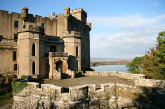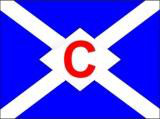DUNVEGAN CASTLE (1) was built in 1896 by Fairfield Ship Building & Engineering Co. at Govan with a tonnage of 5958grt, a length of 450ft 6in, a beam of 50ft 11in and a service speed of 15 knots.
She entered service as a mail steamship and in 1900 had her yards removed. In 1901, together with the Scot, she carried members of both Houses of Parliament to King Edward VII's Spithead Review.
In October 1902 she hit the breakwater at Cape Town doing some £10,000 of damage.
She was laid up at Netley in Southampton Water after being replaced by the Kenilworth Castle in May 1904 and remained there for almost seven years.
In 1913 she replaced the Guelph on the East African service but was laid up again in the following year when the Llandovery Castle entered service.
She was used to land the first wave of the British Expeditionary Force at Le Havre on 10th August 1914 accompanied by the Norman.
She returned to the mail run briefly in 1915 when larger ships were requisitioned for war service but in the October was deployed as a hospital ship with 400 beds.
On 20th April 1916 she reverted back to her owner but under government control and in 1917 carried General Jan Smuts, the South African Prime Minister, to England where he joined the War Cabinet.
In 1918 she undertook two voyages across the Atlantic from Liverpool to New York for Cunard and in 1919 was chartered to the French Government for two voyages from Copenhagen to Cherbourg to repatriate French prisoners of war from Northern Germany.
She was laid up at Netley in 1921 and sold in 1923 to Schwitzer & Oppler for breaking up in Germany.
The four test match series was won 3-1 by Australia
The Australian touring party:
Joe Darling, Warwick Armstrong, Reggie Duff, Charles Eady, Syd Gregory, Clem Hill, Bert Hopkins, William Howell, Ernest Jones, James Kelly, Frank Laver, Charles McLeod, Montague Noble, John Saunders, Joseph Travers, Hugh Trumble and Victor Trumper
The Australian Touring Team - 1902
Inscribed "France to Blighty".
Probably the property of Martin McGeoch, from Wigtown, who served with the Scottish Horse and Royal Garrison Artillery.
He was awarded the DCM for action at Gallipoli.
Signed in pencil by various British Army officers to the reverse
Including officers of the RFA, Gurkha Rifles, Royal Surrey Regiment, RAMC, Royal West Kent Regiment, RGA, and Scottish Horse.
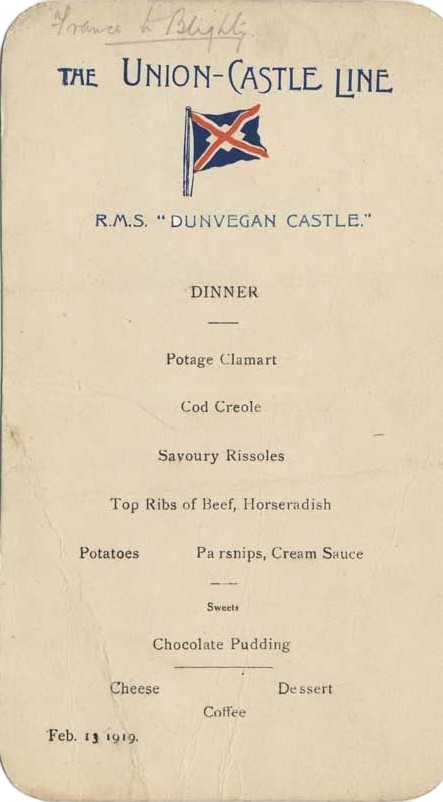

Suicide - 1903
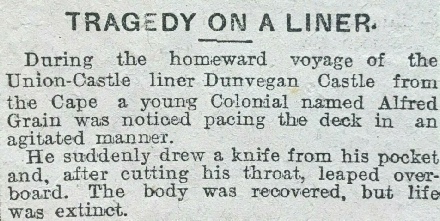
A tragic press cutting from The Cheshire Observer
The suicide happened on 18 June 1903
Alfred Grain was aged 28 years and 5 months
Encounter with SMS Konigsberg - 1914
In April 1914, Konisberg was sent on what was to have been a two-year deployment to German East Africa (now Tanzania), but this was interrupted by the outbreak of World War I in August of that year.
Königsberg initially attempted to raid British and French commercial traffic in the region, but only destroyed one merchant ship in the course of her career. Coal shortages hampered her ability to attack shipping.
On 20 September 1914, she surprised and sank the British protected cruiser HMS Pegasus in the Battle of Zanzibar. She then retreated into the Rufiji River to repair her engines. Before the repairs could be completed, British cruisers located Königsberg, and, unable to steam into the river to destroy her, set up a blockade. After several attempts to sink the ship, the British sent two monitors, Mersey and Severn, to destroy the German cruiser. On 11 July 1915, the two monitors got close enough to severely damage Königsberg, forcing her crew to scuttle the ship. The surviving crew salvaged all ten of her main guns and joined Lieutenant Colonel Paul von Lettow-Vorbeck's guerrilla campaign. The rusting remains of the wreck disappeared into the river bed in 1966.
The wreck lay in the river for fifty years and finally disappeared into the mud in 1965. Her story prompted C.S. Forrester to write the novel ‘The African Queen’ which was later rewritten into the film script we all know so well. The story was also turned into another novel ’Shout at the Devil’ that also became a film.
It is during that period that she would have encountered Dunvegan Castle. Contrary to what would have happened in WW2 the German Navy at that time were far more humane and did not sink passenger ships provided that were not carrying armaments or troops.
In August 1914 a very similar incident occurred when the Union-Castle liner Galician encountered the German raider Kaiser Wilhelm der Grosse.
The full story of that incident can be found here: Galician
I strongly suspect that Königsberg stopped and searched Dunvegan Castle and having found neither troops nor armaments allowed her to continue her passage.


“ We, the undersigned, representing the passengers of the DUNVEGAN CASTLE, wish to place on record our high appreciation of the careful navigation of the ship made by her Commander and officers throughout a passage made under conditions of exceptional difficulty and strain, and to congratulate them on its safe completion.”
To Commander S.H.Owen"
SMS Konigsberg on station in East Africa
Troop Repatriation - 1919
Master |
From
|
To
|
|
J C Robinson
|
7/1896
|
1898
|
|
W Hay
|
1898
|
10/1899
|
|
R Rendall
|
11/1899
|
12/1901
|
|
J Rose
|
1901
|
|
|
R F Harris
|
1/1902
|
6/1904
|
|
T J Bremner
|
7/1904
|
2/1907
|
|
S Henderson
|
1/1911
|
8/1911
|
|
D Samuel
|
8/1911
|
1/1912
|
|
S H Owen
|
1/1912
|
4/1912
|
|
Laid up
|
4/1912
|
10/1912
|
|
G W Armstrong
|
10/1912
|
1/1913
|
|
J W Hague
|
2/1913
|
5/1913
|
|
Laid up
|
5/1913
|
9/1913
|
|
T Chope
|
10/1913
|
1/1914
|
|
Laid up
|
2/1914
|
8/1914
|
|
S H Owen
|
9/1914
|
9/1915
|
|
E Mais
|
10/1915
|
5/1916
|
|
S H Owen
|
8/1916
|
10/1918
|
|
C Imlah
|
10/1918
|
10/1920
|
|
W Morton-Betts
|
10/1922
|
1923
|


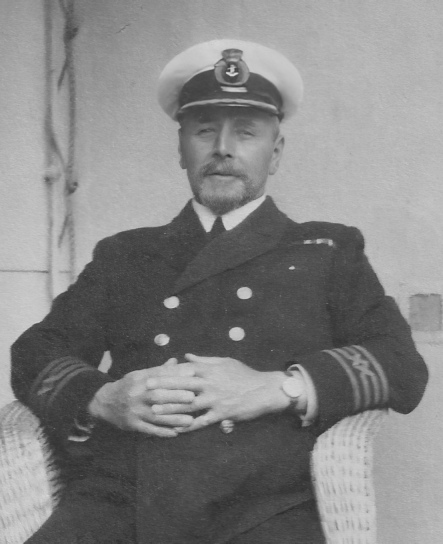
Career Summary
Vessel |
Built
|
Tonnage
|
Official No
|
Ship Builder
|
Engine Builder
|
Engine Type
|
HP
|
Screws
|
|
Dunvegan Castle (1)
|
1896
|
5958
|
105854
|
Fairfield
Govan
|
Fairfield
Govan
|
Triple Expansion Steam
|
1152 NHP
|
1
|
